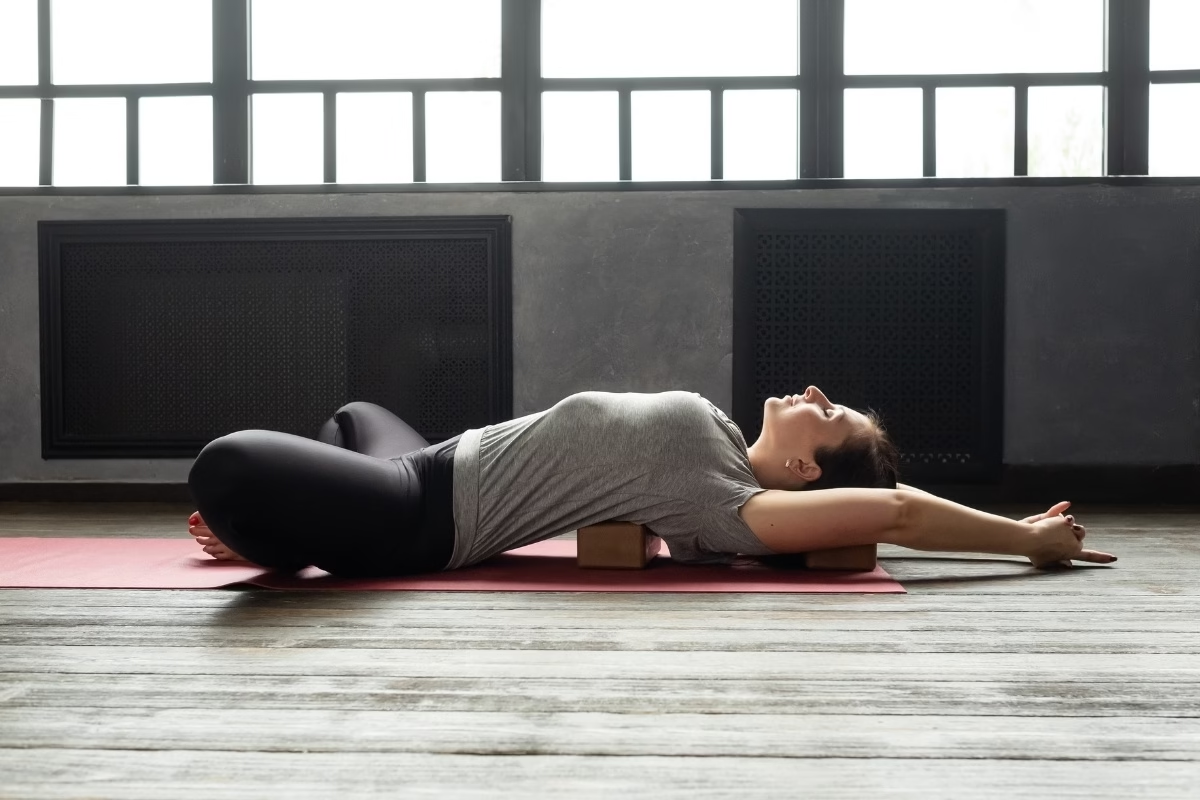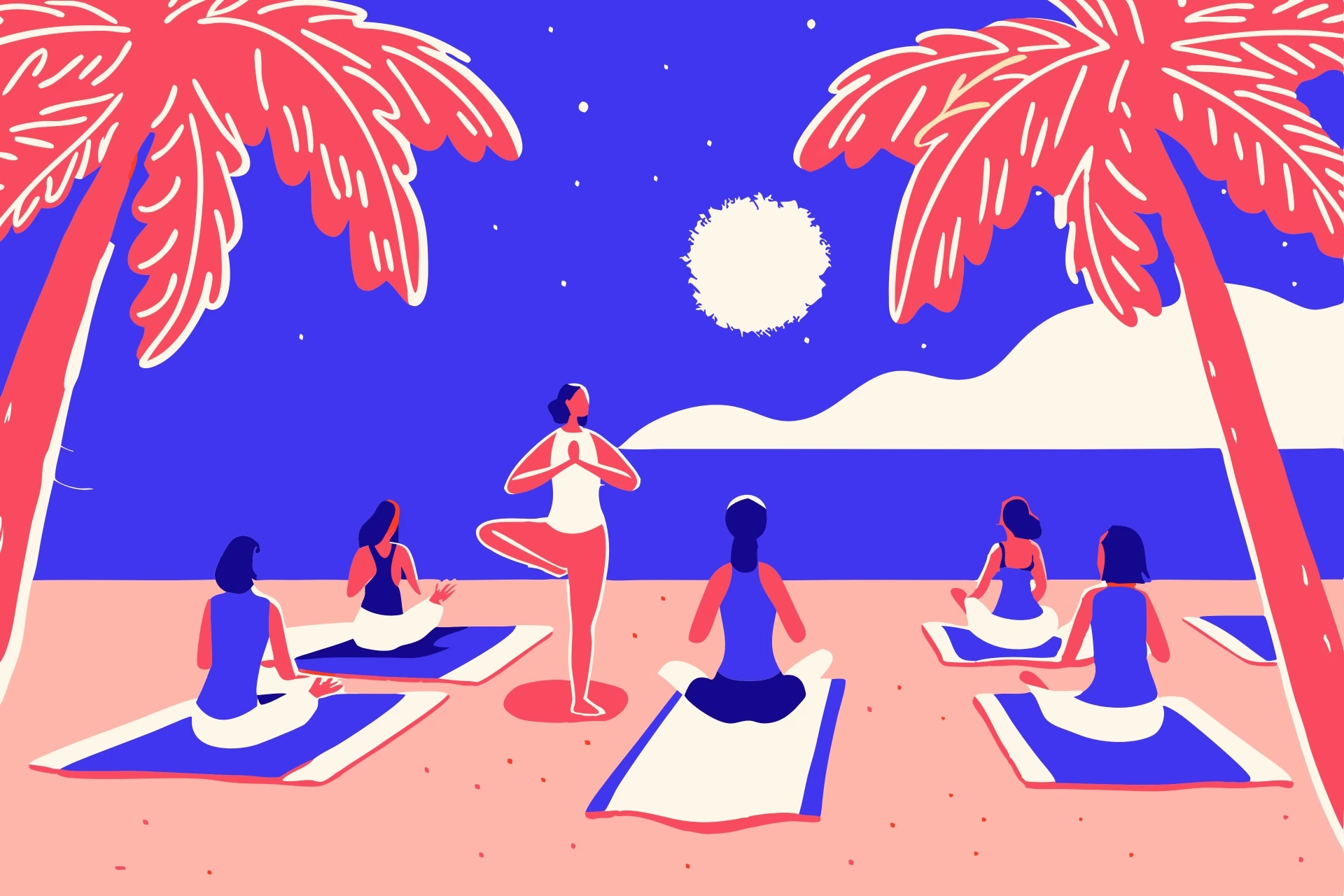In the relentless pace of modern life, the art of stillness often feels out of reach. Yet, it’s in those moments of quiet that true transformation occurs.
Yin yoga, a slow-paced style of yoga, offers an opportunity to surrender, pause, and reconnect with the deepest layers of ourselves by holding poses for extended periods—usually 3 to 5 minutes or more. This allows the body to target connective tissues, such as fascia, ligaments, and joints, while encouraging mindfulness and deep relaxation.
Unlike more dynamic practices like Vinyasa or Ashtanga, Yin yoga emphasizes stillness and introspection, making it a complementary practice that balances the active demands of daily life or other yoga styles.
Its benefits extend beyond the physical, fostering emotional release, increased flexibility, and a calming of the nervous system.
For yoga teachers, incorporating Yin yoga into your repertoire can expand your offerings and provide students with a much-needed space to unwind, stretch, and simply breathe.
To teach Yin yoga, certification typically involves completing a Yin Yoga Teacher Training program, which is often an additional module for certified yoga instructors. These programs usually cover Yin principles, anatomy of connective tissue, energy meridians, and the meditative aspects of the practice, equipping teachers with the skills to guide students into the transformative experience of stillness.
Below, we explore Yin yoga poses perfect for promoting deep relaxation and seamlessly enhancing your classes and retreats.
1. Butterfly Pose (Baddha Konasana)

Butterfly Pose gently opens the hips and stretches the lower back and inner thighs, making it a foundational yin yoga pose that’s both accessible and transformative.
How to Teach It:
- Students sit on their mats with the soles of their feet together, forming a diamond shape with their legs.
- They fold forward, allowing their spine to round naturally.
- Support the pose with a bolster under their forehead or blocks under their knees for comfort.
- Hold for 3-5 minutes, encouraging deep breathing and relaxation.
Benefits:
- Releases tension in the hips and lower back.
- Encourages mindfulness and emotional release.
- Perfect for grounding and centering students in both classes and retreats.
2. Melting Heart Pose (Anahatasana)
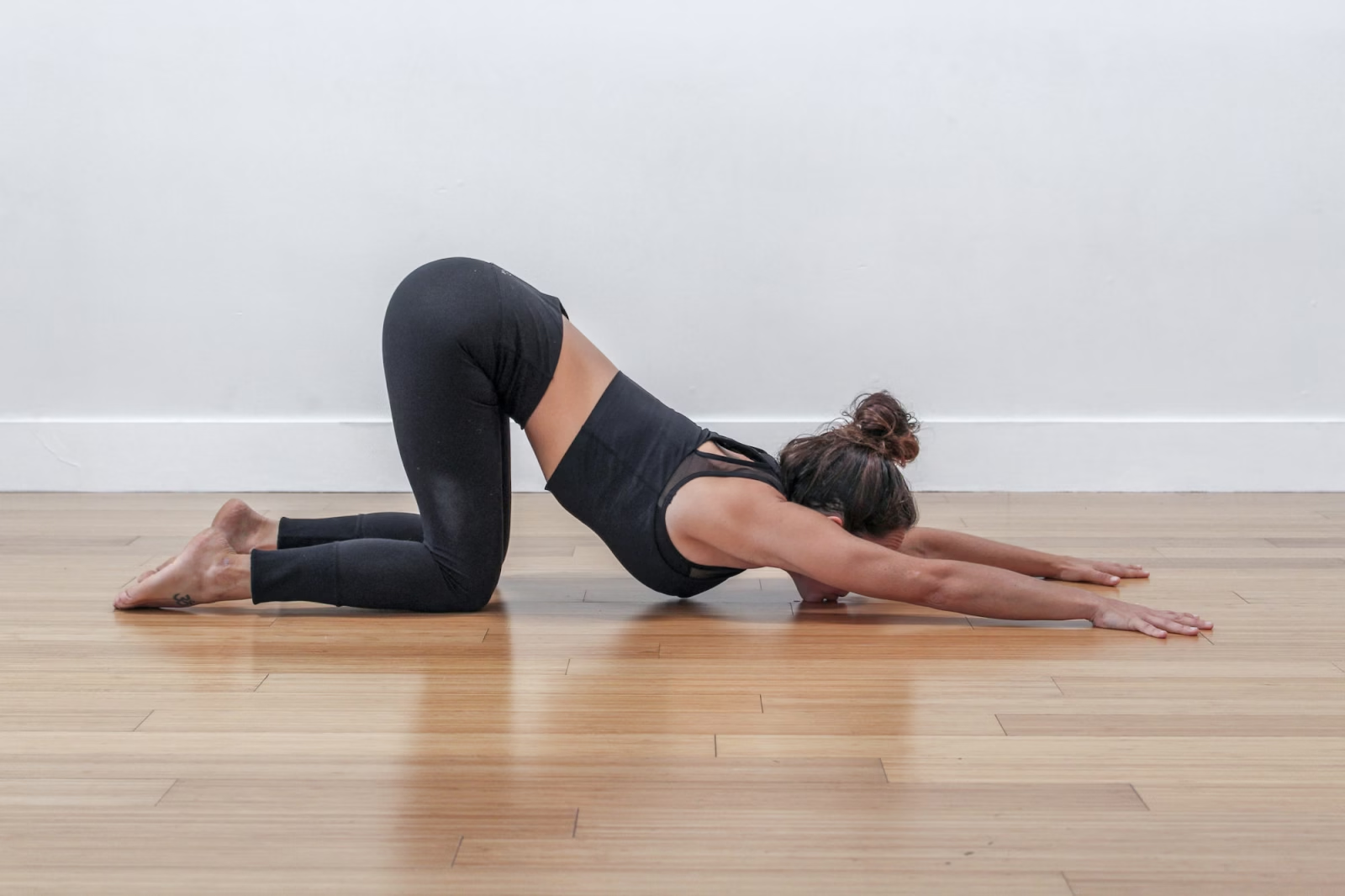
A heart-opening pose, Melting Heart stretches the shoulders, chest, and upper back, inviting students to release emotional tension and surrender to the moment.
How to Teach It:
- Students start in a tabletop position and walk their hands forward.
- With hips stacked above their knees, they lower their chest toward the mat.
- Offer support with a bolster under the chest or forehead if needed.
- Hold for 3-5 minutes, focusing on deep inhales and exhales.
Benefits:
- Opens the heart and shoulders, counteracting tension from daily stress.
- Encourages emotional release and vulnerability.
- Creates a calming, meditative state.
3. Reclined Butterfly Pose (Supta Baddha Konasana)

The Reclined Butterfly is a restorative pose that opens the hips and chest while promoting full-body relaxation.
How to Teach It:
- Students lie on their backs with the soles of their feet together, letting their knees fall open.
- Place a bolster or rolled blanket under their spine for chest opening.
- Guide them to rest their arms comfortably by their sides or over their heads.
- Hold for 5-7 minutes, encouraging them to focus on the rhythm of their breath.
Benefits:
- Gently opens the hips and chest.
- Enhances relaxation and relieves tension.
- Perfect for closing a yin yoga session or retreat practice.
4. Dragon Pose (Yin Lunge)
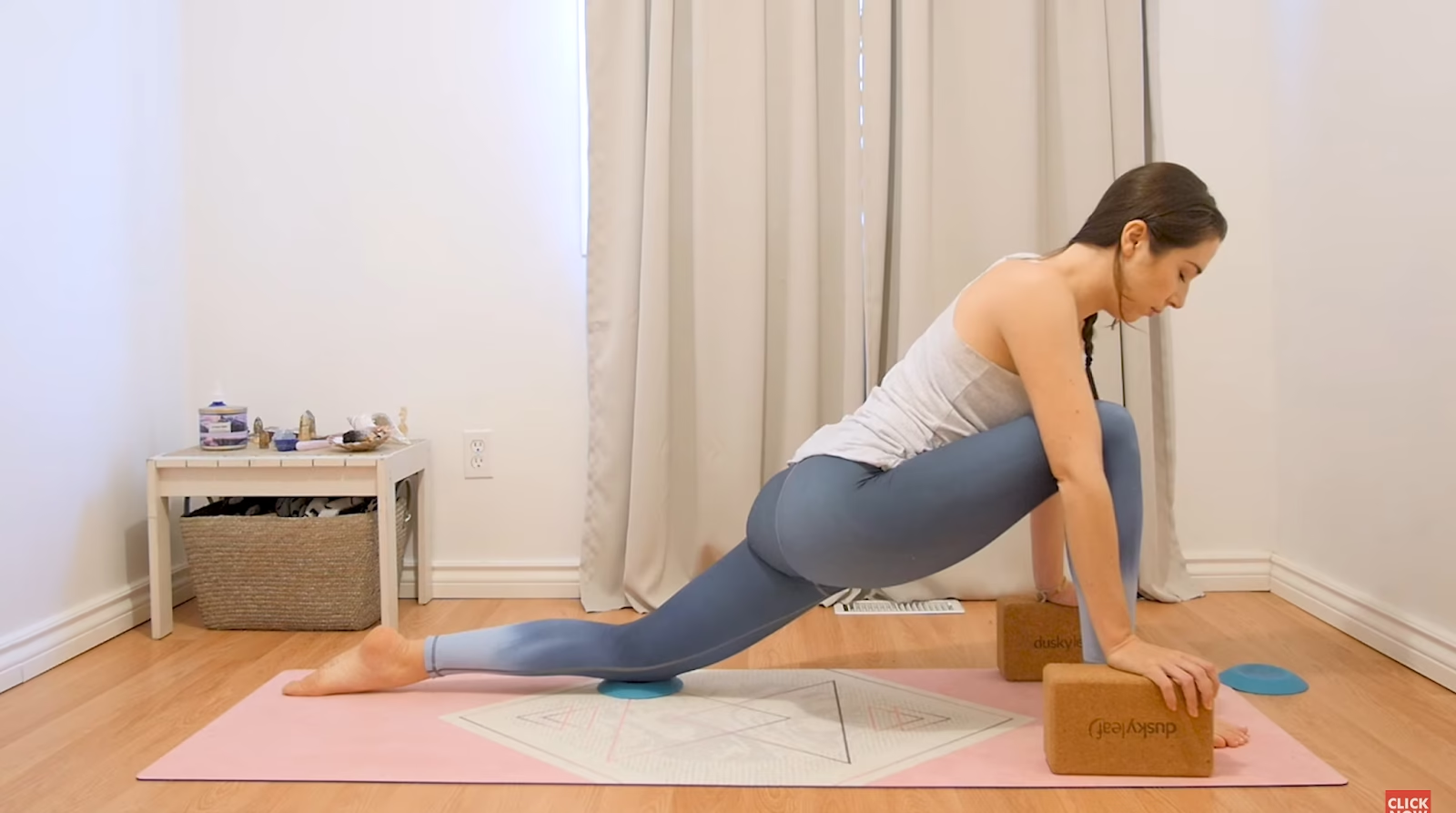
Dragon Pose deeply stretches the hips, thighs, and groin, releasing stored tension and improving flexibility.
How to Teach It:
- From a tabletop position, guide students to step one foot forward into a lunge.
- Encourage them to sink their hips toward the floor, keeping their back leg extended.
- Offer variations such as forearms on the mat or hands resting on blocks.
- Hold for 2-4 minutes on each side, encouraging mindful breathing.
Benefits:
- Targets hip flexors and quads, releasing deep-seated tension.
- Builds patience and emotional resilience.
- Great for longer retreats, where students can fully explore the pose.
5. Caterpillar Pose (Paschimottanasana)
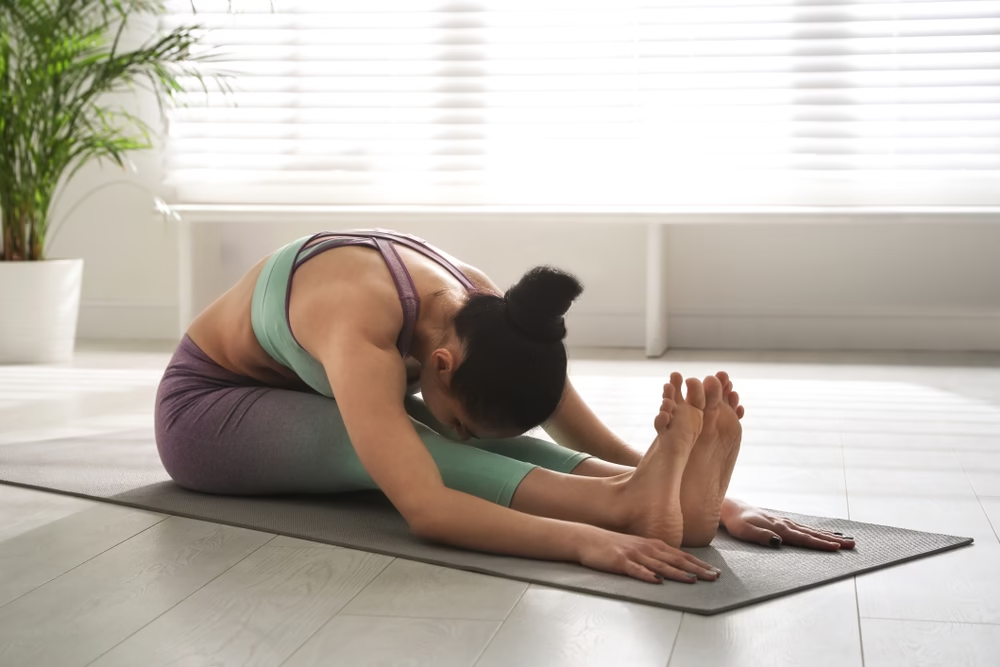
A seated forward fold, Caterpillar Pose stretches the spine and hamstrings while calming the mind. While it may seem like a basic yoga pose, participants will feel the deeper benefits because it is held for a longer time.
How to Teach It:
- Students sit with legs extended and gently fold forward, letting their spine round.
- Use props like bolsters under their knees or blankets on their thighs for support.
- Encourage them to relax their head and shoulders, holding for 3-5 minutes.
Benefits:
- Stretches the back of the body, including the spine and hamstrings.
- Encourages introspection and a sense of surrender.
- Ideal for soothing the nervous system.
6. Supported Child’s Pose (Balasana)
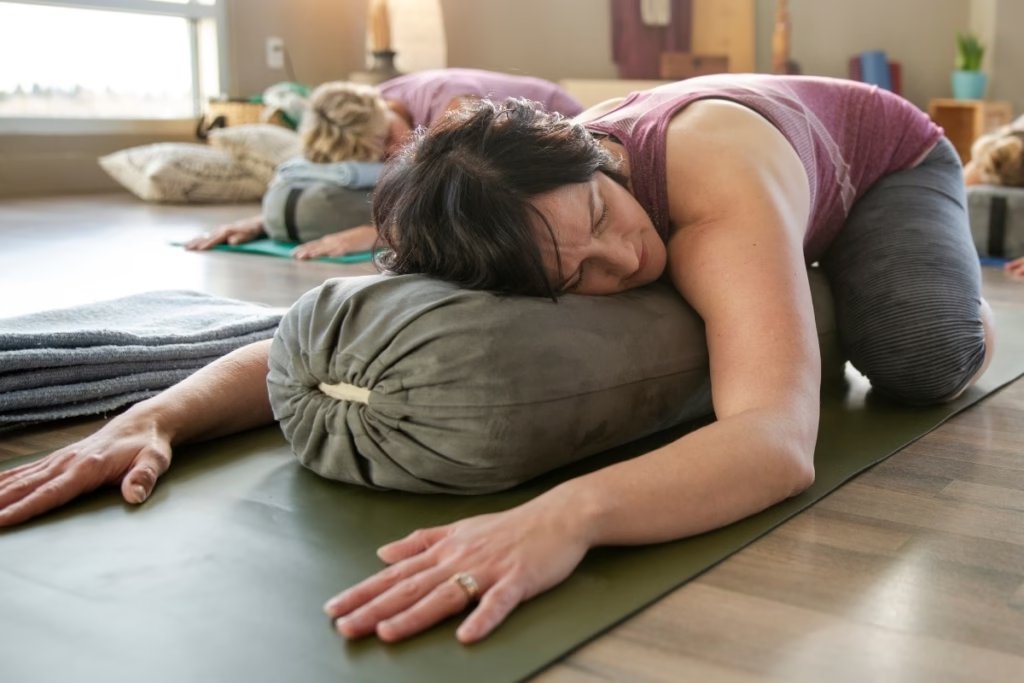
A comforting pose, Supported Child’s Pose promotes deep relaxation and gently stretches the lower back and hips.
How to Teach It:
- Students kneel on the mat and fold forward, extending their arms or letting them rest by their sides.
- Place a bolster or folded blanket under their torso for support.
- Encourage them to rest their forehead on the mat or a block and breathe deeply for 5-7 minutes.
Benefits:
- Provides a nurturing stretch for the lower back and hips.
- Calms the mind and relieves stress.
- Creates a safe space for emotional release.
7. Reclined Twist (Supta Matsyendrasana)
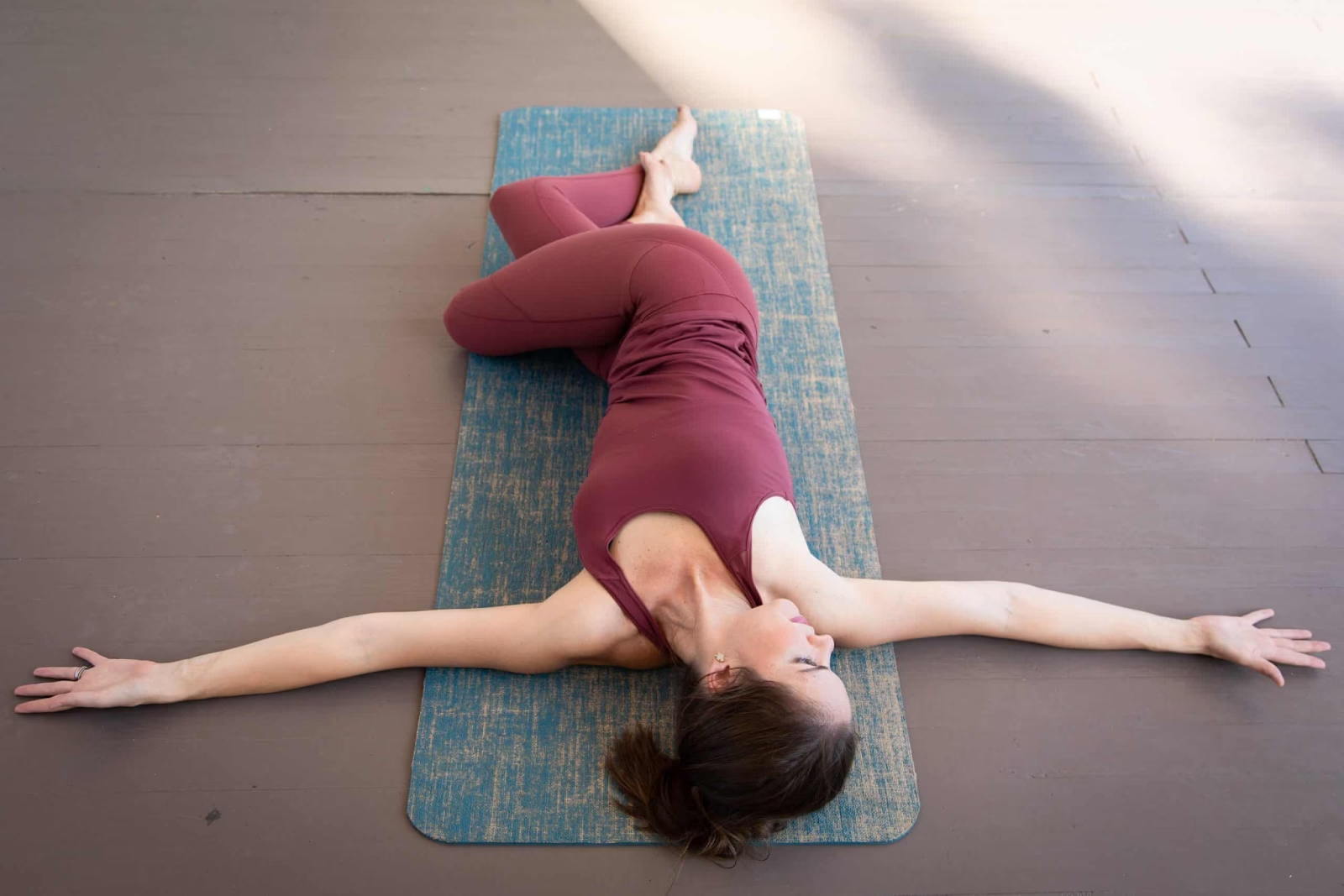
A gentle twist, this pose soothes the spine and promotes relaxation, making it a perfect way to end a yin yoga session.
How to Teach It:
- Students lie on their backs and draw one knee across their body into a twist.
- Encourage them to extend their arms and rest their gaze over the opposite shoulder.
- Use props like a block under the knee for support.
- Hold for 3-5 minutes on each side.
Benefits:
- Releases tension in the spine and lower back.
- Stimulates digestion and detoxification.
- Encourages balance and inner stillness.
Final Thoughts: Guiding Students Toward Stillness
As a yoga teacher, your role extends beyond guiding poses—you create a sanctuary where your students can reconnect with themselves.
Yin yoga offers an unparalleled opportunity for stillness, surrender, and deep relaxation. By incorporating these seven yin yoga poses into your classes or retreats, you provide a pathway for your students to release tension, cultivate patience, and rediscover their inner calm.
Whether in the soft embrace of Reclined Butterfly or the grounding stretch of Dragon Pose, each posture invites a unique experience of connection and release. As your students breathe through the stillness, they’ll uncover the beauty of letting go and the transformative power of simply being.
Ready to elevate your classes?
Expand your teaching repertoire with our guides on couple yoga poses, beginner yoga poses, and advanced yoga poses to bring variety and depth to your sessions. Don’t forget to explore our Journal for expert insights and grab our Yoga Deck to effortlessly create engaging class sequences.

